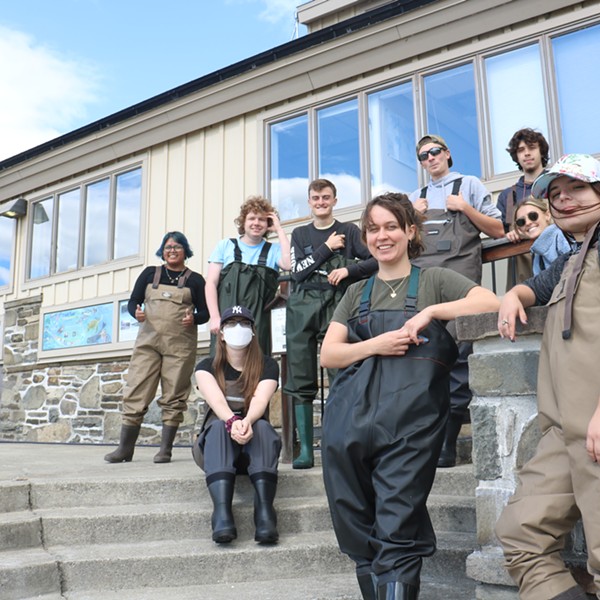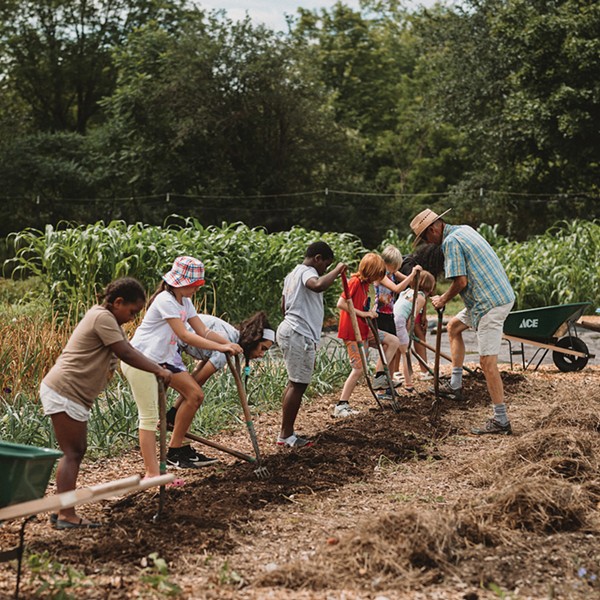
Education leaders are facing some of the most intense challenges since World War II and the Civil Rights Movement. The COVID-19 pandemic presented administrators, teachers, and staff with some of the most intense logistical challenges in decades. The protests following the killing of George Floyd have caused educators to reflect deeply on how institutionalized racism can be rooted out of the classroom.
It is anyone's guess what school will look like in the fall. Students may return to traditional classroom models. Or they may have rotating schedules to cut down on class sizes, or virtual classrooms may continue. Some education experts predict schools will have up to 15 different options for what school might look like. One thing is for certain—schools must use the circumstances to create teachable moments on critical environmental and social issues.
Hudson Valley schools aren't waiting to respond. They are working to build a better future for education in the region. Here, leaders from six schools in the region share anticipated changes and visions for change.
Community Relationships
Last fall, Poughkeepsie Mayor Rob Rolison and Superintendent Eric Rosser launched the Children's Cabinet to develop a shared vision and cradle-to-career path for child growth in the city. The Cabinet's executive committee includes leaders in higher education, philanthropy, hospitals, nonprofits, and other sectors.
In early 2020, the city was invited to join the "By All Means" initiative created by the Harvard Graduate School of Education's Education Redesign Lab to support their grassroots effort to launch issue-specific and solutions-oriented working groups.
When the pandemic hit, cabinet members stepped up to ensure students had needed resources. Nubian Directions II, Inc., provided free Wi-Fi access to high-need Poughkeepsie neighborhoods. The Poughkeepsie Public Library District loaned about 50 Wi-Fi hotspots and the cabinet has raised $62,000 to support the purchase of Chromebooks and internet access for students in need.
"We had this ability to respond in a comprehensive and collaborative way to the crisis in many respects, especially as it related to the school system at a time of great stress," Rolison says.
A community approach is necessary to meet the needs of the whole child, according to Eric Rosser, superintendent of the Poughkeepsie City School District. Children spend just 20 percent of each day in school with the other 80 percent within the community. "When the Mayor and I talk about our partnership, it is not about purely the Poughkeepsie City School District," he said. "The partnership is about what can we do for children and parents of children."
The pandemic has also shown how schools can support their communities in crisis situations. The Homestead School, a farm-based Montessori school, in the Sullivan County hamlet of Glen Spey, responded to the needs of healthcare workers and first responders. Assistant School Head, Jack Comstock used 3D printers owned by the school to make shields for nurses. The school initially funded the materials. Additional support came from the Friends of the Homestead School and grants from the Community Foundation of Orange and Sullivan.
"We did not hesitate to start producing PPE," he wrote in a letter to parents and community members. "We were able to produce over 2,000 shields with the help of school families, local school districts and other businesses."
Eliminating the SAT
The fairness of SAT scores in the college admissions process has been questioned for decades. Children from wealthy families have an advantage to perform better, and as a result, have more access to higher education, according to Leon Botstein, president of Bard College in Annandale-on-Husdon. "Studies have proven a direct correlation between wealth and scores," Botstein says. "It's important that these standardized tests be made obsolete," he says.
Bard is a half-century ahead of most colleges. The school quit requiring SAT scores 50 years ago. In April, Elizabeth H. Bradley, president of Vassar College in Poughkeepsie, announced the school is waiving SAT and ACT score requirements for 2020–2021 applicants. The test-option policy has been discussed before the COVID-19 pandemic, but the disruption of the preparation and testing process spurred action. At the end of the admissions cycle, Vassar will decide if it becomes a permanent policy.
"There are inherent inequalities in standardized testing that have long been recognized by educators," says Sonya K. Smith, dean of admission and student financial services at Vassar. "We believe this new policy aligns us with our core value of access."
Independent colleges have the flexibility to make such changes. Over 1,200 colleges across the country have made the tests optional, including 85 percent of the top liberal arts colleges. Public schools like SUNY New Paltz are awaiting guidance from SUNY leadership, according to Melissa Kaczmarek the director of communication at SUNY New Paltz.
Changing the Story
The pandemic, the fragility of the environment, and the George Floyd protests have given education leaders an opportunity to change the stories told through curriculums and initiatives. Bard has developed five new courses ranging from the history of epidemics to fiction and nonfiction about utopian and dystopian dreams, civics, and others.
As Rhinebeck School District Superintendent Joe Phelan prepares for retirement on July 1 after 21 years on the job, his mission is to promote environmentalism and climate education. After attending the Omega Institute's 2019 Drawdown Learn Conference, he brought ideas back to the superintendents of Dutchess County's 13 public school districts. "We need to teach kids about the environment and make environmentalism and climate change part of our curriculum starting in elementary school," Phelan says. "It includes looking at the logistics of running a school and working with our students to transition them from environmental activism to environmental leadership, to do more than walk out of school on a Friday afternoon to protest."
At Rhinebeck, a current capital project includes converting all fluorescent lighting fixtures to LED. The new lighting creates financial savings, lessens the school's environmental impact, and has benefited the school's autism population. Individuals with autism tend to find fluorescent lighting to be particularly irritating and uncomfortable, and they find the LED lighting more comfortable, Phelan says.
Changing the curriculum narrative must also include hard conversations about race, racism, and the way history is taught. SUNY New Paltz has one of the oldest Black Studies departments in the country, says Kaczmarek. In addition to a long-standing Scholars Mentorship Program, the college has implemented mandatory training on diversity and inclusion and cultural awareness for all faculty and staff, and the new student orientation program includes an introduction and overview to these topics.
Homestead School cofounder Peter Comstock echoed that sentiment.
"Let's start to create a new story for how we can live and thrive and educate our children. There is no room for the limiting scripts and prepackaged explanations that come with the doctrines that have been sold to us," Comstock wrote in a letter to parents and community members. "While elements of wisdom can still be found within these, they grossly misrepresent the actual world we live in, the real crises that we face, and certainly blind us to a way forward that might work for all of us."
Vassar's Office of Student Growth & Engagement (SGE) has been intentional about not siloing diversity and inclusion, instead taking a more holistic approach. The college has countless resources, such as the ALANA Center, Office of International Services (OIS), the LGBTQ+ Center, the Posse Veterans Program, the Transitions Program, and the Women's Center. "It's also been critical that we create more ways for the campus as a whole to engage on topics of race, equity, and inclusion," says Kevin Collins, Director of the ALANA Center.
What Will Education Look Like?
In the coming weeks, more information will emerge as to what school looks like in the fall. Technology will certainly be a part of it, but how much? Botstein believes it serves a critical role, but that it can't replace in-person learning "We're going to have to face the fact that there's no technological solution to the complexity of providing an education classroom," he says.
The reasons schools have been able to transition to virtual platforms this year is because the administrators, teachers, and students had an existing relationship, according to Botstein. That rapport could be continued online because they already knew one another. "The classroom has survived every technological innovation in the history of the world," he said. "Education is going to survive this one too, to show that the old seminar room looks very much like what you'll see after this pandemic is over."
In-person classrooms will survive, but will they look like 13th-century universities? Not at the Homestead School, where creative solutions for getting back to school have led to the purchase of nine tipis to provide more teaching space and encourage classroom ventilation. Despite all of the challenges, education has the chance to embrace innovative solutions for building a better future for all students.
Katie Navarra is an award-winning writer who covers education, horses, farming, and business/leadership.
















